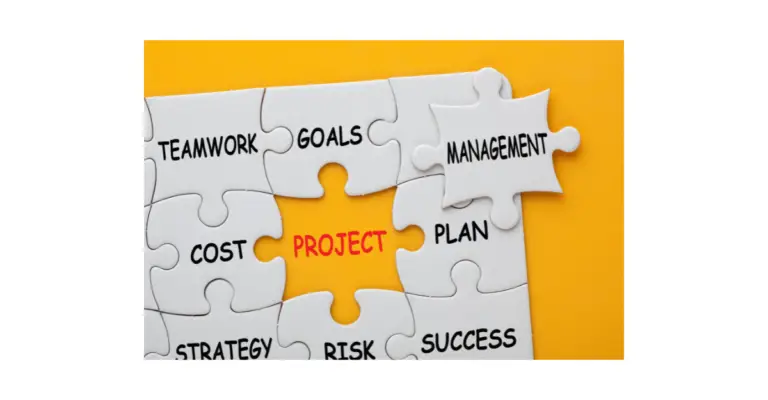risk management involves identifying, evaluating, and responding to risks that could impact organizational goals and manage risk.
It differentiates between threats and opportunities, prioritizes risks based on impact and likelihood, and implements strategies to address them effectively.
Enterprise risk management focuses on evaluating both risks and opportunities to enhance decision-making.
The process includes risk identification, assessment, and mitigation to reduce adverse events.
Compliance with standards like ISO 31000 and COSO ERM is important. It safeguards reputation, guarantees operational continuity, and enhances strategic decision-making.

Effective risk communication is essential for informed decisions. Understanding risk management is crucial for organizational success.
Effective risk management is integral to any organization’s strategic management, whether it operates domestically or internationally.
The comprehensive assessment and mitigation of risks ensure the longevity and success of business ventures.
Managing risk involves several key strategies, each tailored to address the spectrum of potential threats an organization may face, from operational risks to cybersecurity threats.
Key Takeaways
- Identifying, evaluating, and responding to risks for organizational objectives.
- Distinguishing between threats and opportunities for effective prioritization.
- Involves risk analysis, assessment, and mitigation to control potential risks.
- Enhances strategic decision-making, operational continuity, and organizational resilience.
- An integral part of governance, safeguarding reputation, and ensuring proactive risk management.
Definition of Risk Management
Risk management is the systematic process of identifying, evaluating, and responding to risks to achieve organizational objectives.
It involves distinguishing between potential threats and opportunities, prioritizing them based on their impact and likelihood, and implementing strategies to address them effectively.
Understanding the Fundamentals of Risk Management
At risk management’s core, it is identifying and assessing potential risks. Risk Assessments provide critical insights that help business leaders understand the vulnerabilities and threats to critical assets and organizational processes.
These assessments are typically conducted by risk management teams skilled in identifying negative and positive risks associated with business objectives and operations.
Once risks are identified, organizations must decide on their management approach. The fundamental strategies include risk avoidance, reduction, sharing, and acceptance.
Risk avoidance involves altering plans to eliminate potential risks, while risk reduction employs techniques to minimize the impact or likelihood of risk occurrence.
Risk sharing often involves spreading the risk across other parties, such as through outsourcing or insurance policies.
In contrast, risk acceptance is the conscious decision to retain the risk due to the cost of mitigation being more than the risk itself.
Traditional risk management vs. enterprise risk management
In the domain of organizational risk management practices, traditional risk management primarily focuses on addressing specific risks within distinct departments or functions.
In contrast, enterprise risk management takes a holistic approach by integrating risk considerations across the organization.
Traditional management may lack strategic alignment with overall organizational goals, whereas enterprise risk management considers risk as a strategic enabler for achieving objectives.
The COVID-19 pandemic underscored the importance of adopting an enterprise risk management approach for holistic risk assessment, emphasizing the need to move beyond addressing departmental risks towards aligning risk assessment with overall objectives.
Risks vs. opportunities
The shift towards enterprise risk management underscores the importance of evaluating potential risks and opportunities within the organization’s operational framework.
Risks are events that pose potential negative impacts, while opportunities present the possibility of positive outcomes.
Effective risk management involves capturing and managing emerging risks to achieve objectives through thorough risk analysis.
Understanding probabilities and planning for contingencies are crucial components of mitigating risks and maximizing opportunities.
Collaboration with risk owners is essential in the risk management process to address both known and unforeseen risks.
By actively involving stakeholders and fostering a dynamic approach to risk management, organizations can adapt to changing circumstances and enhance their ability to achieve project goals.
The risk management process
A fundamental aspect of organizational governance involves the systematic approach to identifying, evaluating, and controlling potential risks that may impact achieving objectives.
- Risk Identification: The initial step in the risk management process is identifying all potential risks that could affect the organization’s goals.
- Risk Assessment: Once risks are identified, they are assessed to understand their potential impact and likelihood of occurrence.
- Risk Mitigation: Strategies are then developed to mitigate the identified risks, aiming to reduce the probability and impact of adverse events.
risk management standards and frameworks
Guidelines established by risk management standards and frameworks play a significant role in shaping organizations’ approaches to identifying and mitigating risks effectively.
Standards such as ISO 31000 and COSO ERM provide a structured framework for risk management, helping organizations navigate complex risk landscapes.
Compliance rules and regulatory scrutiny underscore the importance of adhering to these standards, ensuring effective risk management practices are in place.
However, adopting these risk management standards may necessitate adjustments to suit specific industries, and integrating new standards can pose challenges for organizations.
Strategic Application of Risk Management Techniques
Effective risk management also involves the strategic use of various techniques and tools.
One valuable tool is the risk register, which documents all identified risks and information regarding their assessment, response strategies, and current status.
This allows for a structured and systematic approach to monitor and control risks throughout the project lifecycle or within a business operation.
The Role of Project Risk Management
Project risk management is a critical area where these strategies are rigorously applied. Project managers are tasked with foreseeing potential risks that could impact the project timeline, budget, or quality.
Through strategic management, they can employ risk management techniques to anticipate and mitigate these risks, thus safeguarding the project’s objectives and ensuring its successful delivery.

Integrating Cybersecurity in Risk Management Frameworks
In today’s digital age, cybersecurity risks pose significant threats to organizations. Cyber attacks can compromise valuable assets and critical infrastructure, making preventing such attacks a high priority.
Many organizations take insurance policy to reduce risk.
Integrating cybersecurity measures within the broader enterprise management (ERM) framework helps protect against security threats while aligning with the business strategy to prevent cyber attacks.
A project manager must deeply understand cybersecurity’s technical aspects and risk management’s strategic implications.
Legal Liabilities and Insurance as Risk Management Strategies
Legal liabilities are another crucial aspect of management. Organizations must navigate the complex landscape of legal requirements to avoid penalties, fines, or legal suits that could result from non-compliance or negligence.
Risk management strategies often include comprehensive legal assessments by sponsoring organizations to ensure all potential legal risks are known and managed.
Similarly, insurance plays a pivotal role in management by providing a financial safety net against certain risks.
Health insurance for employees, property insurance for physical assets, and professional liability insurance are common examples that help organizations manage potential financial impacts from various risks.
Natural Disasters and Unexpected Risks
Natural disasters represent a category of unexpected risks that require special attention. These are highly unpredictable and can have catastrophic effects on both operational and strategic levels.
Natural disaster Effective management in this context involves proper planning, insurance, and building robust organizational processes that enhance resilience and ensure business continuity.
Importance of Risk Management
Management is essential in safeguarding an organization’s reputation and ensuring its long-term success.
By adhering to risk management standards and understanding the limitations, businesses can effectively protect themselves from potential threats.
The five critical management steps are essential for identifying, analyzing, and responding to risks proactively and strategically.
What Is Risk Management & Why Is It Important?
Effective management is essential for organizations to safeguard their reputation, ensure operational continuity, and enhance strategic decision-making processes.
- Identifying Risks: Organizations can pinpoint potential threats and opportunities through robust risk management, allowing for proactive measures.
- Assessing Risks: Evaluation of risks enables informed decision-making, helping prioritize actions to mitigate negative impacts and capitalize on positive outcomes.
- Controlling Risks: Implementing strategies to control risks minimizes threats like data breaches and maximizes opportunities for growth and success.
Protects Organization’s Reputation
Safeguarding an organization’s reputation through meticulous management practices is essential in today’s competitive and volatile business environment.
Effective risk management plays a vital role in reputation protection, as it focuses on mitigating the impact of negative events and preventing reputational damage from organizational crises and scandals.
By enhancing stakeholder trust and confidence, a robust management framework ensures that unexpected challenges are met with preparedness.
The consequences of reputation damage can be long-lasting, affecting brand value and customer loyalty.
Hence, implementing and adhering to strong risk practices helps deal with uncertainties and maintain the integrity and sustainability of the organization.
Limitations and risk management standards
In the domain of risk management, compliance with established standards and an awareness of limitations are essential for fostering a culture of proactive risk mitigation and organizational resilience.
Customizing to fit specific industries and legal requirements is vital when considering management standards. Integrating new standards into existing processes can present challenges and require new working methods.
Compliance with these standards also helps identify and mitigate risks through best practices.
IBM, a prominent player in management, offers consulting services, financial risk services, and AI-driven solutions to assist organizations in effectively managing risks.
Embracing and adapting to these standards ensures compliance and enhances management capabilities and preparedness.

Why Are the Five Steps of Risk Management Critical?
Considering the importance of adhering to risk management standards and their critical role in organizational resilience, it becomes evident why the five management steps are essential for effectively addressing and mitigating potential risks.
These steps, including risk identification, analysis, evaluation, treatment, and monitoring, form a structured approach that enhances decision-making processes.
Organizations can minimize financial losses, strategic errors, and other unforeseen events that could jeopardize business continuity by systematically identifying threats, analyzing their impacts, evaluating their significance, determining appropriate responses, and monitoring risk treatments.
The thorough application of these steps is vital for ensuring organizational resilience and sustainability in the face of evolving risks and uncertainties.
Risk Identification and Analysis
Risk identification is an essential step in management. It involves evaluating potential threats that could impact an organization’s operations, ranging from IT security vulnerabilities to the risks posed by natural disasters.
Effective risk analysis helps in understanding the probabilities of different risk events. Identifying vulnerabilities early through risk analysis aids in contingency planning.
Engaging stakeholders in the risk identification and analysis is essential for thorough risk management.
Risk Mitigation Strategies
Implementing comprehensive risk mitigation strategies is crucial for organizations to safeguard operations and optimize outcomes.
Businesses can effectively address potential threats and minimize losses by employing various approaches such as avoidance, reduction, sharing, transferring, and acceptance.
These strategies are critical in mitigating financial impacts and ensuring business continuity in the face of uncertainty.
Avoidance involves steering clear of activities that pose high risks, while reduction focuses on lessening the likelihood and severity of risks.
Sharing entails distributing risks among multiple parties, and transferring involves shifting risks to external entities through mechanisms like insurance.
Conversely, acceptance involves acknowledging and managing risks within acceptable thresholds to maintain operational resilience.
Effective Risk Communication
To build upon the foundation of risk mitigation strategies, effective risk communication is the linchpin in fostering understanding and collaboration among organizational stakeholders.
Key Elements of Effective Risk Communication:
- Transparent Sharing: Clear and transparent risk information sharing guarantees stakeholders grasp the risks associated with activities and decisions.
- Informed Decision-Making: Facilitates trust and enables stakeholders to make informed decisions based on reliable risk information.
- Timely Response: Promotes timely responses to risks by providing updated risk data through visual aids and data visualization techniques.
Effective risk communication is pivotal in enhancing organizational resilience, enabling proactive risk management, and optimizing outcomes through informed decision-making.
Risk management limitations and examples of failures
In the management domain, the complexities of maneuvering uncertainties and potential pitfalls often underscore the need for a nuanced approach to anticipating and addressing vulnerabilities.
One of the limitations lies in effectively prioritizing risks and balancing high-probability risks with low loss.
Evaluating overall risk can be challenging due to the intricate nature of risks. Mishandling risk evaluations is a common pitfall, leading to the oversight of certain risk categories.
Over-reliance on rules-based risk management can result in the neglect of critical risks, particularly preventable, strategy, and external risks.
Hence, a nuanced understanding of risks beyond compliance is important for effective management practices.
How to build and implement a risk management plan
When building and implementing a management plan, organizations should focus on the following key steps:
- Identifying potential risks
- Evaluating the impacts of these risks
- Devising appropriate responses
By outlining clear risk assessment, mitigation, and monitoring procedures, businesses can enhance their ability to anticipate and address uncertainties effectively.
Companies can strengthen their resilience to unexpected challenges by systematically assigning roles, establishing timelines, and ensuring regulatory compliance.
Risk management best practices
Building and implementing a robust management plan is crucial for effective risk mitigation strategies, which must be done by carefully identifying, evaluating, and prioritizing potential risks to organizational objectives.
Effective risk management practices involve:
- Developing a thorough management plan that outlines the organization’s risk management program and strategies for risk reduction measures.
- Regularly updating the management plan to adapt to changing risk landscapes and ensure its relevance in managing risks.
- Engaging in proactive management activities to mitigate risk, protect the organization’s reputation, ensure business continuity, and minimize financial losses.
How to build and implement a risk management plan
Developing a comprehensive strategy for creating and executing a risk management plan is vital for organizations aiming to navigate potential threats and opportunities effectively.
A management plan involves identifying, evaluating, and prioritizing risks that could impact an organization.
Strategies must be developed to mitigate these risks and minimize their impact. Implementation includes assigning responsibilities, setting timelines, and allocating resources.
Regularly monitoring and reassessing the plan are essential to adapt to changing risk factors.
A proactive approach through a well-executed risk management plan helps organizations address potential threats, enhance decision-making, and safeguard against financial damage.
Organizations can effectively manage risks and protect their operations by continuously monitoring and implementing strategies.
Frequently Asked Questions
What Is Risk Management in Simple Words?
Risk management is the practice of identifying, evaluating, and responding to potential risks that could impact an organization’s objectives.
It involves analyzing various risks to minimize negative consequences and maximize positive outcomes, ensuring sustainable business operations.
What Are the 5 Types of Risk Management?
Financial, operational, strategic, compliance and reputational management are key types.
Financial manages market and credit risks, operational addresses internal processes, strategically aligns with organizational goals, compliance guarantees adherence to laws, and reputational safeguards brand image.
What Is the Main Purpose of Risk Management?
The main purpose of management is to identify, assess, and control potential risks that could impact an organization’s objectives and goals.
It aims to minimize negative events and maximize positive outcomes through effective risk mitigation strategies.
What Are the 5 Principles of Risk Management?
The five key principles of management are identification, assessment, prioritization, mitigation, and monitoring.
These principles guide organizations in recognizing, evaluating, addressing, and monitoring risks to minimize potential threats and optimize opportunities for success.

Conclusion
The importance of risk management cannot be overstated. It is a critical element that supports the achievement of business objectives, protects against potential losses, and enhances the overall resilience of an organization.
As the business environment continues to evolve, especially with the increasing prevalence of international operations and digital transformations, management must also adapt, ensuring that strategies are proactive rather than merely reactive.
By understanding and implementing comprehensive risk management strategies, business leaders can navigate the complexities of modern business environments, safeguarding their organizations against various risks.
Risk management is an essential practice in project management that involves identifying, evaluating, and mitigating risks to improve project outcomes.
Organizations can minimize potential disruptions and capitalize on opportunities by effectively managing risks.
Projects can be better equipped to succeed through stakeholder collaboration, thorough risk analysis, and strategic planning.
It is crucial for organizations to build and implement robust management plans to strengthen their resilience and guarantee project success.

Chris Ekai is a Risk Management expert with over 10 years of experience in the field. He has a Master’s(MSc) degree in Risk Management from University of Portsmouth and is a CPA and Finance professional. He currently works as a Content Manager at Risk Publishing, writing about Enterprise Risk Management, Business Continuity Management and Project Management.

